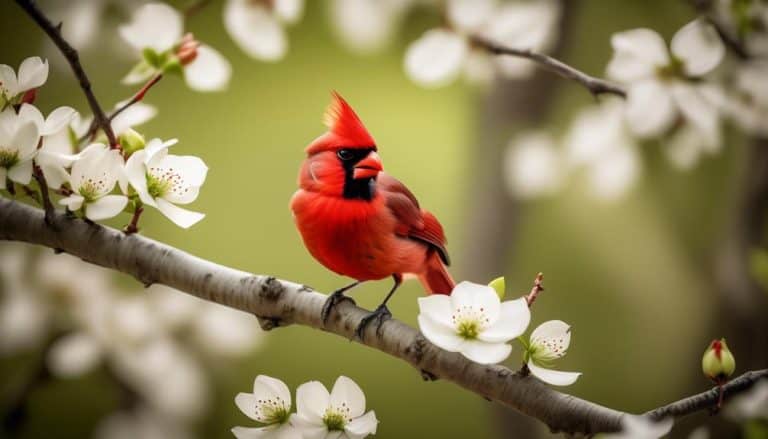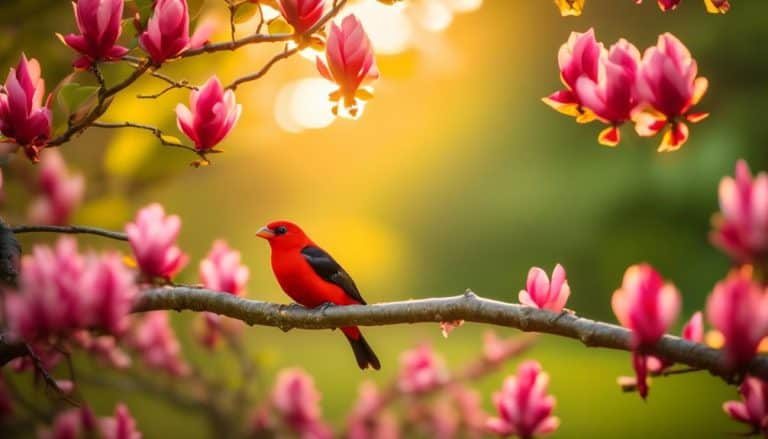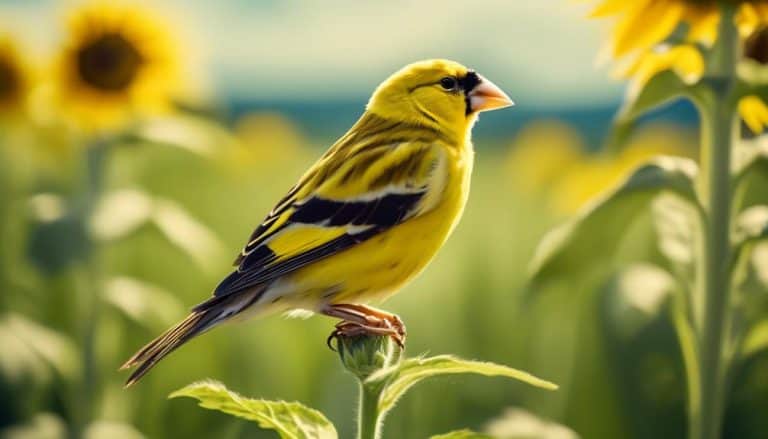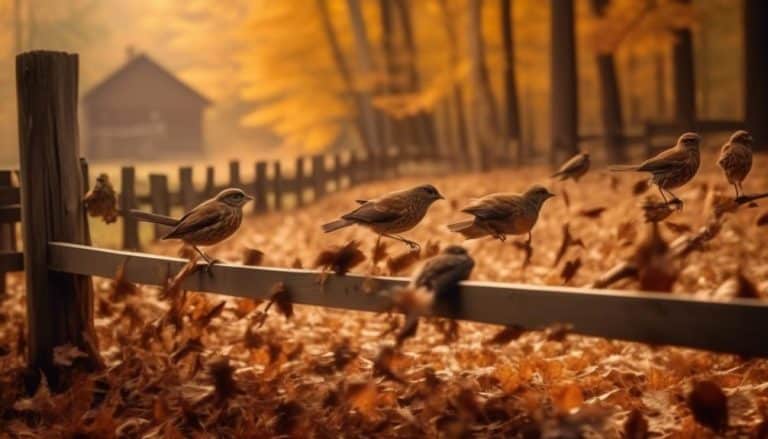As I step into the vibrant world of Virginia's nature, I am often captivated by the sight of red birds gracefully flitting through the foliage. These crimson creatures, with their striking plumage, seem to paint the landscape with their presence. But there is more to these red birds than meets the eye.
In this discussion, we will explore their physical characteristics, their habitat and distribution in Virginia, their feeding habits and diet, their breeding and nesting behaviors, and even their enchanting songs and calls.
So, let's embark on a journey that will unravel the secrets of these fascinating red birds and deepen our understanding of their lives in the heart of Virginia's wilderness.
Physical Characteristics of Red Birds
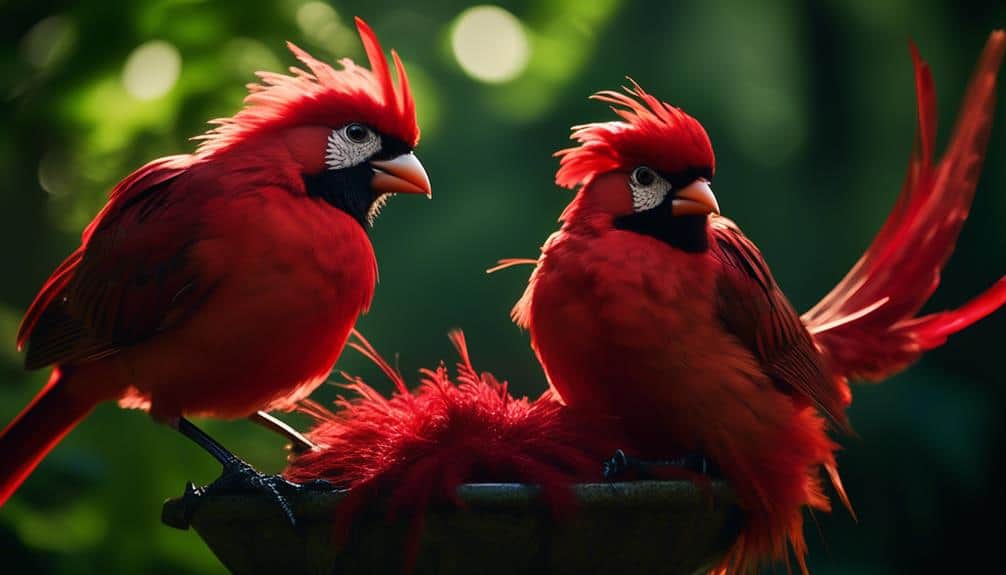
Red birds in Virginia, commonly known as Northern Cardinals, are characterized by their vibrant red plumage and distinct physical features. These birds exhibit interesting variations in their coloration. The males sport a bright red plumage with a black mask and a prominent crest, while the females have a more muted coloration, with shades of brown and red. This dimorphism is believed to help the birds in their breeding process and nest protection.
The red plumage of these birds serves as an effective camouflage, blending well with the dense foliage of Virginia's forests. This allows them to hide from predators and protect their nests. Additionally, their powerful beaks enable them to crack open seeds and nuts, making them expert foragers.
When it comes to migration patterns, Northern Cardinals are generally non-migratory birds. They tend to remain in their breeding territories throughout the year. However, some individuals may move short distances during winter in search of food. This flexibility in their behavior allows them to adapt to changing environmental conditions.
Habitat and Distribution of Red Birds in Virginia
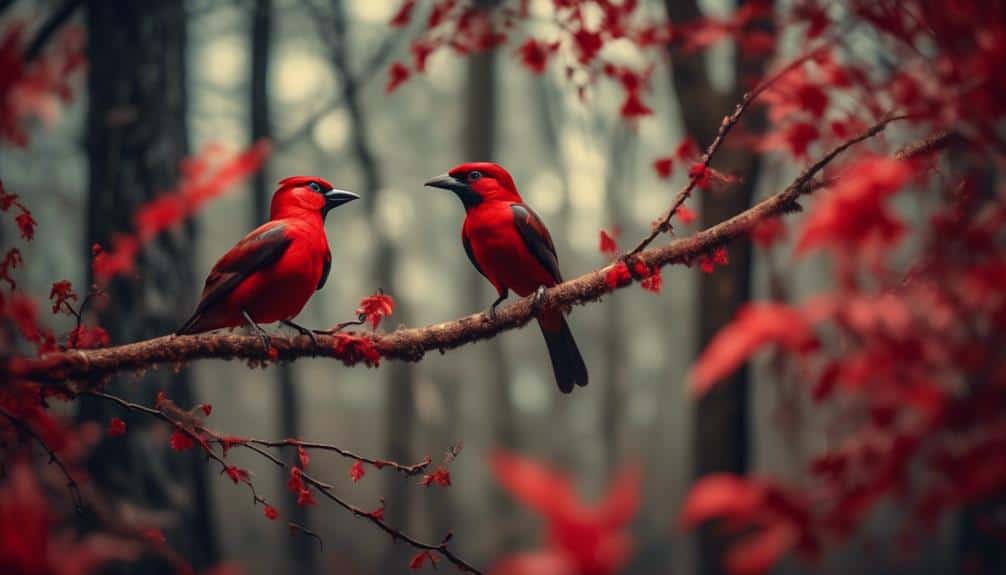
The habitat and distribution of Northern Cardinals in Virginia are influenced by their physical characteristics and behavioral adaptations. These red birds have specific requirements for their habitat, which include:
- Forest edges: Cardinals prefer areas where the forest meets open spaces, such as fields or meadows. This allows them to easily access both food sources and protective cover.
- Dense vegetation: They're often found in areas with thick shrubs and bushes, which provide them with nesting sites and protection from predators.
- Water sources: Cardinals are attracted to areas with water, such as streams, ponds, or bird baths, as they require regular access to water for drinking and bathing.
- Urban and suburban areas: These adaptable birds can also be found in residential areas with well-maintained gardens and bird feeders.
The population of red birds in Virginia has shown stable trends in recent years. Conservation efforts for these birds focus on protecting their preferred habitats, promoting native plant growth, and reducing threats such as habitat loss and predation. Additionally, providing bird feeders and water sources in urban and suburban areas can help support their population.
Feeding Habits and Diet of Red Birds
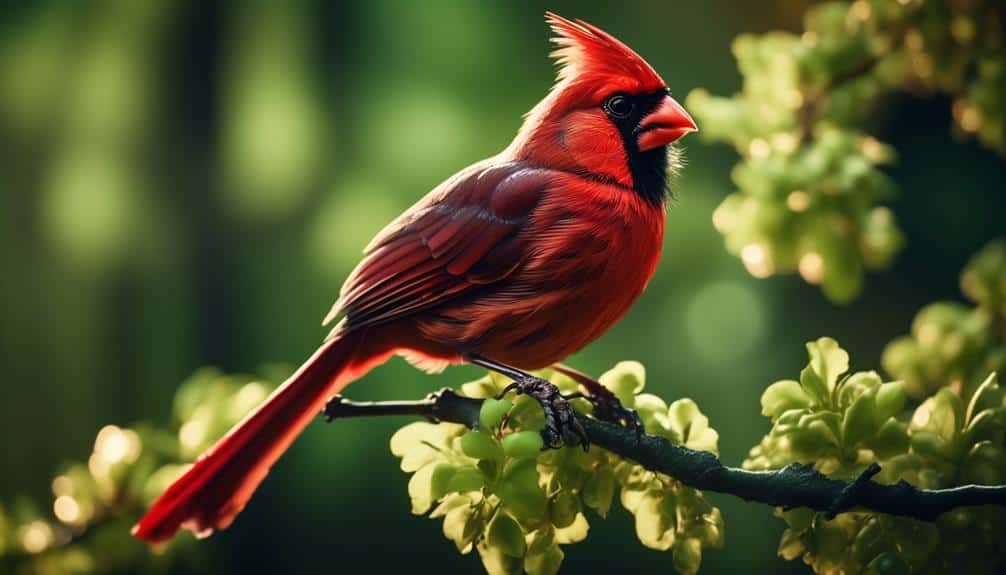
Feeding on a diverse range of seeds, fruits, and insects, Northern Cardinals in Virginia exhibit a varied diet that supports their vibrant red plumage and overall health. These birds have unique feeding patterns that allow them to adapt to seasonal variations and optimize their energy intake.
The feeding habits of Northern Cardinals can be categorized into three main groups: seeds, fruits, and insects. They consume a wide variety of seeds, including sunflower, safflower, and millet. Their strong beaks are perfectly adapted for cracking open hard shells and extracting the nutritious kernels inside. Fruits also play a significant role in their diet, especially during the summer and fall seasons. They feed on a range of fruits such as berries, cherries, and grapes, which provide them with essential vitamins and antioxidants. Insects make up another crucial part of their diet, particularly during the breeding season when they need a high protein intake to support their reproductive efforts.
To illustrate the feeding habits of Northern Cardinals in Virginia, the following table outlines their preferences for different food sources throughout the year:
| Season | Seeds | Fruits | Insects |
|---|---|---|---|
| Spring | Sunflower seeds | Cherries | Caterpillars |
| Summer | Millet | Berries | Grasshoppers |
| Fall | Safflower seeds | Grapes | Beetles |
| Winter | Black oil seeds | Juniper berries | Insect larvae |
Breeding and Nesting Behaviors of Red Birds
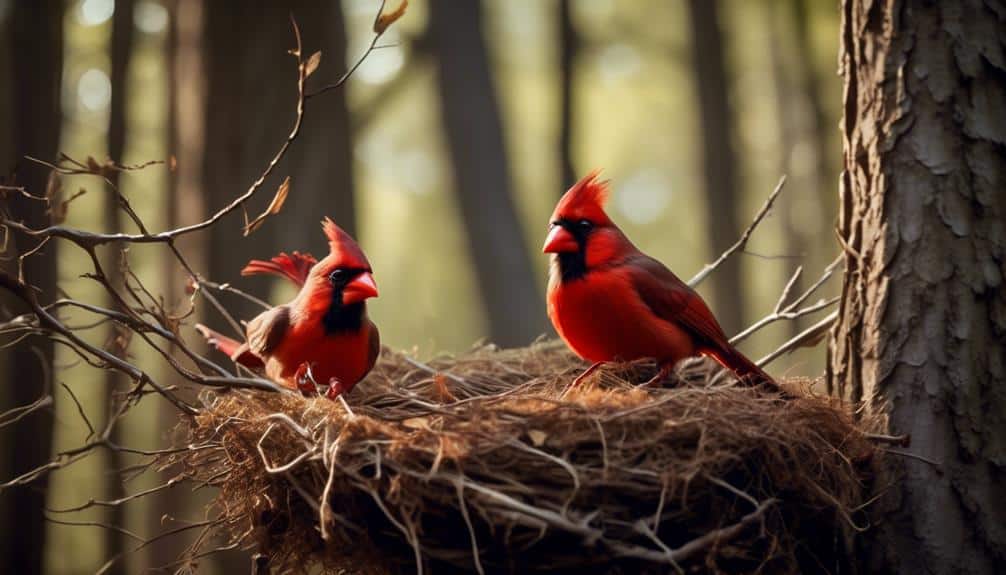
During the breeding season, Northern Cardinals in Virginia exhibit intricate behaviors and construct elaborate nests to ensure the successful reproduction of their vibrant species. These breeding and nesting behaviors are fascinating to observe and play a crucial role in the survival of the cardinal population. Here are some key aspects of the courtship rituals and nesting habits of these red birds:
- Courtship Rituals:
- Males engage in vibrant displays of color and song to attract females.
- They hop around their potential mates, offering them food as a sign of affection.
- Males also engage in 'mate-feeding' behavior, where they regurgitate food for the females.
- Nesting Habits:
- Cardinals build their nests in dense shrubs, trees, or vines for protection.
- The nests are constructed by the female using twigs, leaves, and grass.
- The female builds a cup-shaped structure inside the nest, lined with soft materials like feathers.
- Cardinals often use the same nest for multiple broods during the breeding season.
Understanding the breeding and nesting behaviors of Northern Cardinals is essential in conserving their population. Additionally, studying their migration patterns can provide valuable insights into their overall ecology and help in implementing effective conservation strategies.
Songs and Calls of Red Birds in Virginia
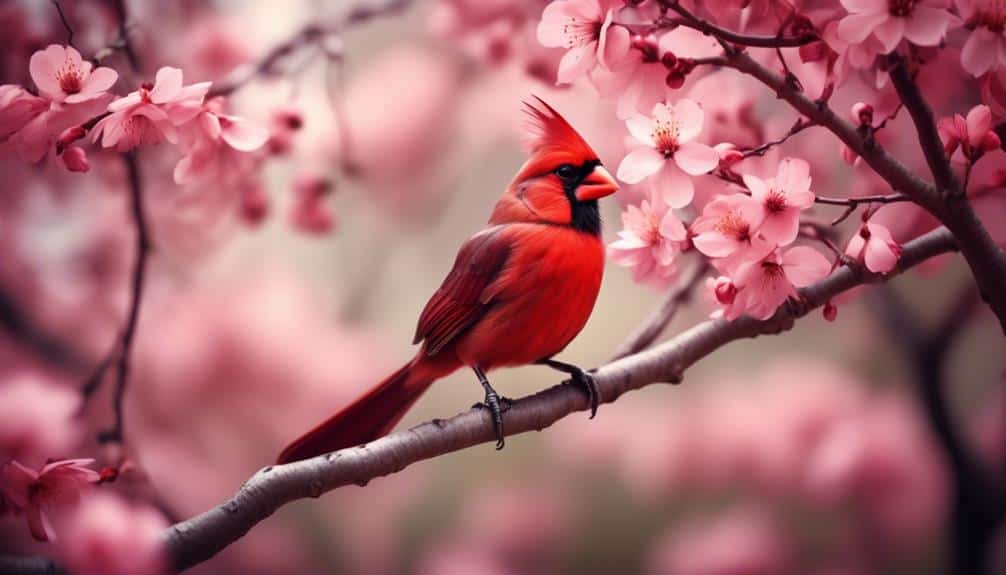
Observing the vibrant red birds in Virginia, one cannot help but be captivated by their melodious songs and distinctive calls. These vocalizations play a crucial role in communication, attracting mates, and defending territories. Let's explore the songs and calls of these magnificent red birds in Virginia.
| Song or Call | Description | Purpose |
|---|---|---|
| Cheerful Warble | A series of high-pitched, fluid notes that rise and fall in a cheerful manner. | Attracts mates and establishes territory. |
| Loud Chirp | A sharp, piercing sound that is repeated in quick succession. | Used for alarming and warning other birds of potential threats. |
| Whistled Melody | A complex, melodious tune consisting of clear, flute-like notes. | Used during courtship displays to attract a mate and communicate territorial boundaries. |
Red birds in Virginia exhibit fascinating migration patterns. Some species, like the Northern Cardinal, are non-migratory and remain in Virginia year-round. Others, such as the Summer Tanager, migrate to Virginia during the breeding season and return to their wintering grounds in Central and South America.
Conservation efforts are essential to protect red birds and their habitats. Deforestation, climate change, and habitat loss pose significant threats to these birds. By preserving and restoring their natural habitats, implementing bird-friendly practices, and raising awareness, we can ensure the survival of these beautiful red birds for future generations to enjoy.
Frequently Asked Questions
What Is the Average Lifespan of Red Birds in Virginia?
The average lifespan of red birds in Virginia depends on various factors, including threats from predators. It is essential to study their habitat, behaviors, and population dynamics to accurately determine their lifespan.
Are There Any Predators That Pose a Threat to Red Birds in Virginia?
Yes, there are predators in Virginia that pose a threat to red birds. Understanding predator-prey dynamics is crucial for conservation efforts to protect these birds and maintain their population.
Do Red Birds in Virginia Migrate During Certain Times of the Year?
During certain times of the year, red birds in Virginia migrate, following specific migration patterns. This behavior is influenced by their breeding behavior, as they seek optimal conditions for nesting and raising their young.
How Many Eggs Does a Female Red Bird Typically Lay in a Nesting Season?
In a typical nesting season, a female red bird usually lays around 3 to 5 eggs. This is a common pattern in red bird breeding behavior, which is characterized by careful nesting and egg-laying habits.
Can Red Birds in Virginia Imitate the Songs of Other Bird Species?
Yes, red birds in Virginia can imitate the songs of other bird species. Their vocal abilities allow them to mimic the sounds of other birds, which is a fascinating behavior observed in these birds.
Conclusion
In conclusion, the vivid red plumage of the birds in Virginia adds a striking beauty to the natural landscape. These feathered creatures exhibit fascinating behaviors such as building intricate nests and singing enchanting melodies.
Their diet primarily consists of seeds and insects, making them an important part of the ecosystem. Observing these red birds in their natural habitat is like stepping into a living painting, where their vibrant colors bring life and joy to the surroundings.

